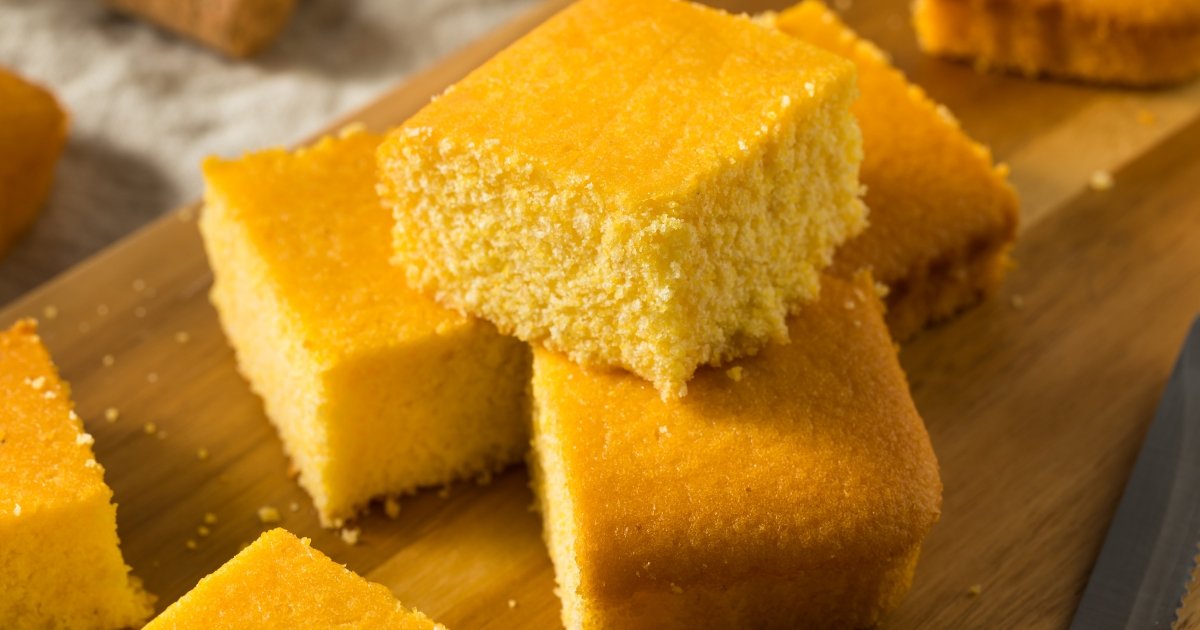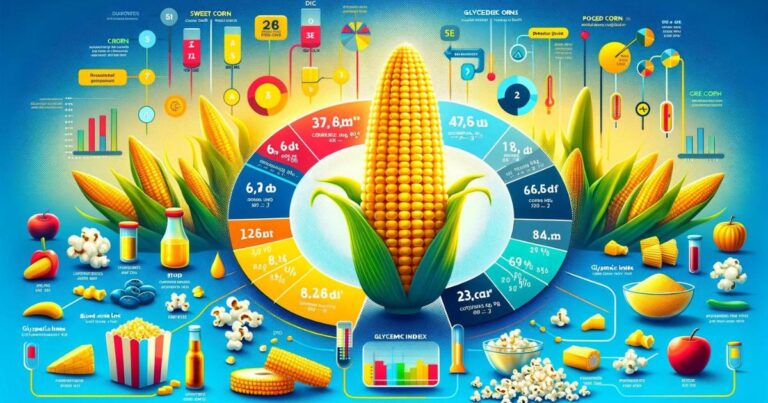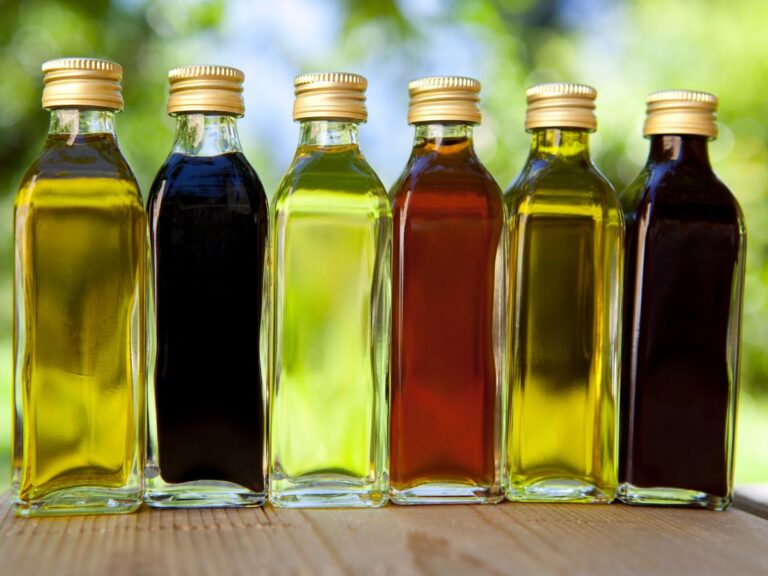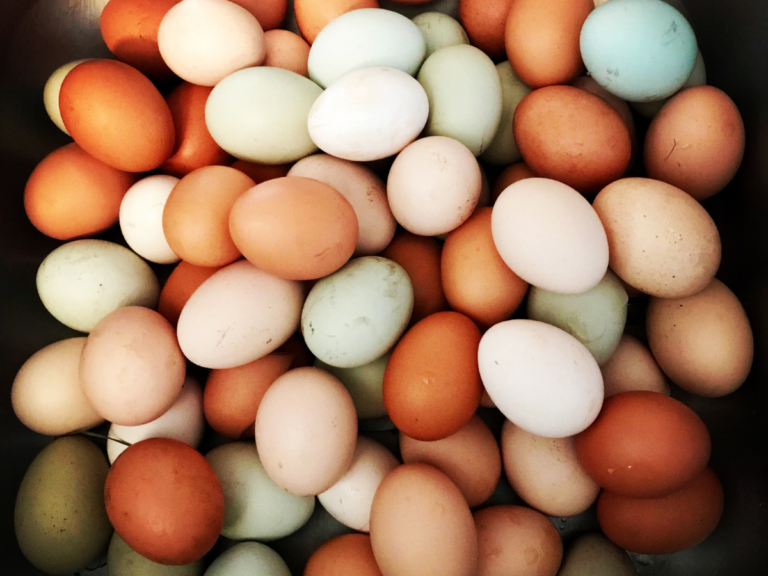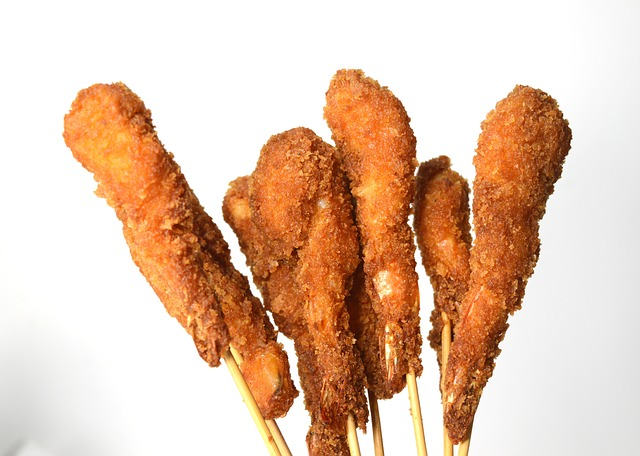9 Best Substitutes For Milk When Making A Cornbread Recipe
Whether you have a box of Jiffy cornbread mix ready to go or are whipping up grandma’s famous cornbread recipe from scratch, we have all the options for substituting Milk. Here are nine dairy-free options, varieties, and milk alternatives you can use when looking for a substitute for milk in cornbread to help you follow your dietary restrictions and elevate your everyday bland cornbread recipe.

Cornbread Without Milk: 9 Ways to Substitute Milk in Cornbread
Cornbread, a classic comfort food known for its golden crust and tender crumb, is a staple in many cuisines worldwide. I know when mom would whip out the box of Jiffy cornbread traditionally, that recipe would call for milk to add moisture, richness, and flavor.
However, many bakers seek alternatives to milk, whether due to dietary restrictions, allergies, lactose intolerance, or simply a desire to experiment with different flavors and textures.
I have experimented in my kitchen with the craziest ingredients, from evaporated milk to dairy-free cornbread options like creamed corn, and now I’m going to show you my favorite nine different milk substitutes for making cornbread, detailing the benefits and unique qualities of each option.
I’ve realized that cornbread isn’t just a side dish to serve with your potatoes and sour cream or next to a plate of roasted chicken; it’s a canvas for creativity, especially when finding the best substitute for milk in cornbread. So this is where the fun begins: substituting milk to keep the cornbread dream alive for everyone!
Table of Contents
Why Would You Want To Substitute Milk Out of Cornbread?

Why, you ask, would one venture into the realm of milk substitutes for cornbread? The reasons are as varied as the options themselves.
Some of us wave the flag of veganism, some can’t stand the thought of dairy and sour cream without a stomach upset, and others, well, we just love to tinker and taste.
Experimenting with different ingredients or adding a little whole wheat flour can sometimes lead to even tastier versions of classic recipes. Hey, you might even stumble upon flavors you didn’t even know were possible.
What Are The Best Milk Substitutes For Cornbread?

I’ve uncovered a treasure trove of substitutes that emulate and sometimes even elevate the humble sweet cornbread to new heights.
Forget about simply swapping cow’s milk with a random half milk alternative; each option comes with its own unique flair, adding subtle nuances that can make your cornbread a topic of conversation.
Milk Substitutes for Cornbread
1. Almond Milk
What it Offers: Almond milk brings a subtle nutty flavor and a lightness that can make your cornbread feel a bit airier. Perfect for those looking for a dairy-free or vegan option that doesn’t compromise on taste or texture.
Benefits: A nut milk low in calories, enriched versions come packed with calcium and vitamin D.
Quick How-To: Use it one-for-one in place of dairy milk. If your recipe calls for 1 cup of milk, use 1 cup of almond milk instead.
2. Coconut Milk
What it Offers: Rich and creamy, coconut milk can add a hint of tropical flair to your delicious cornbread, making it irresistibly moist.
Benefits: Great for adding richness, plus it’s dairy-free and vegan-friendly. It also adds a slight sweetness that can enhance the overall flavor.
Quick How-To: Substitute it in a 1:1 ratio. For a less coconutty flavor, opt for the light version.
3. Soy Milk
What it Offers: With its neutral taste, soy milk is a fantastic all-around substitute that doesn’t alter the classic taste of cornbread too much.
Benefits: High in protein and often fortified with vitamins and minerals, it’s a nutritious swap.
Quick How-To: Use soy milk cup for cup in any cornbread recipe.
4. Oat Milk
What it Offers: Oat milk’s natural sweetness and creaminess make your cornbread moist and slightly sweet, enhancing the natural corn flavors.
Benefits: Dairy-free, nut-free, and high in fiber, especially beneficial for those with allergies.
Quick How-To: A straight swap, 1:1, works perfectly.
5. Cashew Milk
What it Offers: Similar to almond milk but with a creamier texture and richer flavor, cashew milk can add depth to your cornbread’s taste profile.
Benefits: A good source of healthy fats and magnesium, plus it’s dairy-free.
Quick How-To: Use in the same amount as regular milk called for in your recipe.
6. Hemp Milk
What it Offers: Hemp milk adds a slightly nutty, earthy flavor to cornbread, setting it apart from its more traditional counterpart.
Benefits: Rich in Omega-3 fatty acids and plant-based protein, making it a healthy alternative.
Quick How-To: Substitute hemp milk one-for-one with dairy milk.
7. Flaxseed Milk
What it Offers: Flaxseed milk introduces a slight nuttiness to your cornbread, along with a boost of nutrition.
Benefits: High in Omega-3 fatty acids and dairy-free, it’s great for heart health.
Quick How-To: Use a 1:1 ratio when swapping for dairy milk.
8. Sweetened Condensed Milk
What it Offers: This is your go-to for a richer, sweeter cornbread that feels like a treat. It’ll make the cornbread more moist and tender, with a delightful sweetness.
Benefits: Adds a decadent richness and moisture that’s hard to beat.
Quick How-To: Because sweetened condensed milk is thicker and sweeter, use half the amount of dairy milk called for and dilute it with water. For every cup of milk, use ½ cup sweetened condensed milk mixed with ½ cup water.
9. Baking Powder (for Leavening)
What it Offers: If you’re out of milk and need to make cornbread, increasing the baking powder can help leaven the bread, ensuring it rises and stays fluffy.
Benefits: Perfect for when you’re in a bind and need to make cornbread without any milk or milk substitutes.
Quick How-To: Add an extra 1/4 teaspoon of baking powder per cup of flour to your recipe. Water is the liquid component, maintaining the recipe’s moisture without milk.
Exploring these milk substitutes caters to various dietary needs and opens up a new world of flavors and textures for your cornbread.
Go with the traditional maple syrup for your corn bread or throw on some toppings like vegan butter and brown sugar to bring these bad boys to the next level.
How to Substitute Milk in Cornbread Recipes

Swapping out dairy milk for a non-dairy alternative in cornbread isn’t just about pouring in a different liquid or using water and powdered milk in your cornbread batter. Here’s how to make sure your milk substitute yields the best possible cornbread:
Understand the Role of Milk: Milk in baking provides moisture, fat, and flavor. Choosing a substitute that can offer these same qualities is crucial for a successful replacement.
Consider the Flavor Profile: Each milk substitute comes with its own unique taste. Select one that complements the sweet, savory nature of cornbread. For instance, coconut milk can add a rich, slightly sweet flavor, while almond milk might bring a subtle nuttiness.
Adjust the Sweetness: Some milk substitutes, especially the sweetened varieties, can affect the overall sweetness of your cornbread. Taste your batter and adjust the sugar levels accordingly.
Watch the Fat Content: The fat in milk contributes to the tender crumb of cornbread. If you’re using a low-fat substitute, consider adding an extra tablespoon of oil or melted butter to keep your cornbread moist.
Mixing Matters: When incorporating your milk alternative, mix until just combined. Overmixing can lead to tough cornbread.
Recipe Adjustments and Measurements

For those who love diving straight into the kitchen without the fuss, here’s a quick cheat sheet on how to use these milk substitutes in your cornbread recipe:
Direct Substitution: For almond, soy, oat, cashew, hemp, and flaxseed milk, use a 1:1 ratio. If the recipe calls for 1 cup of dairy milk, use 1 cup of your chosen substitute.
Sweetened Condensed Milk: Remember, it’s sweeter and thicker. Mix ½ cup sweetened condensed milk with ½ cup water to replace 1 cup of regular milk. Adjust the sugar in your recipe accordingly.
Baking Powder Adjustment: If using water without milk, add an extra 1/4 teaspoon of baking powder per cup of flour to ensure proper leavening and fluffiness.
Easy-to-Adapt Cornbread Recipe

Ingredients
1 cup all-purpose flour
1 cup yellow cornmeal
1/4 cup sugar (adjust based on the sweetness of your milk substitute)
4 teaspoons baking powder (increase by 1/4 teaspoon if using water)
1/2 teaspoon salt
1 cup milk substitute of choice (or ½ cup sweetened condensed milk mixed with ½ cup water)
1/4 cup vegetable oil (add an extra tablespoon if using a low-fat substitute)
2 large eggs
Instructions
Preheat Oven and Prepare Pan: Start by heating your oven to 425°F (220°C). Grease an 8-inch square baking pan or a cast iron skillet to ensure your cornbread doesn’t stick.
Mix Dry Ingredients: Take a large bowl and whisk together the flour, cornmeal, sugar, baking powder, and salt. If you’re using water instead of a milk substitute, remember to add that extra 1/4 teaspoon of baking powder here.
Combine Wet Ingredients: In another bowl, beat the eggs, then mix in your choice of milk substitute and vegetable oil. If you’re using the sweetened condensed milk option, this is where you blend it with water.
Combine Wet and Dry Mixtures: Pour the wet ingredients into the dry ingredients. Stir until just combined, making sure not to overmix. A few lumps are fine and will help keep your cornbread tender.
Bake: Pour the batter into your prepared pan or skillet. Bake for 20-25 minutes, or until a toothpick inserted into the center comes clean. The top should be golden, and the edges should be slightly removed from the pan.
Cool and Serve: Let the cornbread cool in the pan for a few minutes before slicing. Serve warm with butter, honey, or your favorite cornbread accompaniment.
Tips for Success
Choosing Your Substitute: Think about the flavor profile you’re aiming for. Coconut milk is for richness, almond milk is for lightness, and sweetened condensed milk is for sweetness and moisture.
Adjusting for Sweetness: If you opt for a sweet milk substitute like sweetened condensed milk, consider reducing the sugar in the recipe to balance the flavors.
Texture Adjustments: If the batter is too thick with a certain substitute, don’t hesitate to add more splash to achieve the right consistency. Conversely, if it’s too runny, a bit more cornmeal or flour can help thicken it.
Perfecting the Art of Milk-Free Cornbread
Making cornbread without milk is not just about following a recipe; it’s an invitation to explore and tailor your baking to suit dietary needs, taste preferences, and even the ingredients you have on hand.
Here are some final tips and insights to help you perfect your milk-free cornbread and make the process as enjoyable as possible.
Experiment with Flavors
Don’t be afraid to add your personal touch to the cornbread. Here are a few ideas:
Herbs and Spices: A teaspoon of rosemary or thyme can add a delightful aromatic quality. For a sweeter cornbread, a dash of cinnamon or nutmeg can enhance the warmth of the flavors.
Add-Ins: Stir in some fresh corn kernels, diced jalapeños, or a cup of shredded cheese to the batter for texture and flavor boosts.
Toppings: Before baking, sprinkle the top with a light layer of sugar for a crispy crust, or add a handful of grated cheese for a savory finish.
Adjusting for Altitude
Baking at high altitudes can be tricky due to lower air pressure. If you’re baking your cornbread above 3,000 feet:
Increase the amount of milk substitute by 2-4 tablespoons to add moisture.
Decrease baking powder by 1/4 teaspoon to prevent the bread from rising too quickly and falling.
Raise the baking temperature by 25°F to help set the structure of the bread before it expands too much.
Storing and Reheating
To keep your cornbread moist and delicious:
Storing: Wrap the cooled cornbread tightly in plastic wrap or store it in an airtight container. It will stay fresh at room temperature for up to 2 days or in the refrigerator for up to a week.
Reheating: Warm individual slices in the microwave for 15-20 seconds or reheat the entire loaf in a 350°F oven, covered with foil, for about 10 minutes.
Embrace the Process
Every batch of cornbread is an opportunity to refine your baking skills and preferences. Maybe you’ll discover that you prefer the nutty undertones of almond milk or the richness that coconut milk brings to the table.
Each substitute affects the cornbread differently in flavor, texture, and moisture, offering a new experience each time.
Final Words of Encouragement
One of the key takeaways from experimenting with milk substitutes in cornbread is the importance of flexibility.
Ingredients can often be swapped, adjusted, or omitted based on what you have on hand or the dietary requirements of those you’re cooking for.
Whether you’re a seasoned baker or just starting, the journey through milk-free baking is one of endless possibilities and discoveries.
Remember, the perfect recipe is not always the goal; instead, it’s the experiences gained, the knowledge shared, and the joy of eating something made with your own hands.
Plant-based milk alternatives cater to dietary restrictions and can contribute to a more sustainable and health-conscious lifestyle.
Many milk substitutes have a lower environmental footprint than dairy milk, and they offer a range of nutritional benefits, including lower levels of saturated fats and an abundance of vitamins and minerals.
FAQ and Additional Information
What does milk do in cornbread?
Milk plays several crucial roles in cornbread, contributing to its flavor, texture, and overall structure. Understanding these functions can help you better navigate substituting it with other ingredients. Here’s a breakdown of what milk does in cornbread:
Moisture
Milk is a primary source of moisture in cornbread, essential for activating the gluten in the flour and allowing the cornbread to develop a soft, tender crumb. The moisture also helps to dissolve the sugar and salt, evenly distributing their flavors throughout the batter.
Fat Content
The fat in milk contributes to the richness and moistness of the cornbread. Fat is a tenderizer; it coats the flour’s proteins, reducing gluten formation and producing a tender baked product. This is particularly important in cornbread, where a tender, moist texture is desired.
Leavening Agent
In cornbread recipes, milk works with leavening agents like baking powder or baking soda. The acidity in milk can help activate baking soda, contributing to the rise and fluffy texture of the cornbread. This reaction produces carbon dioxide gas, which allows the batter to expand and the cornbread to rise.
Flavor
Milk adds a subtle sweetness and richness to the best cornbread, enhancing its flavor. It complements the cornmeal’s natural taste, creating a balanced and appealing flavor.
Browning
The sugars and proteins in milk contribute to the Maillard reaction, a chemical reaction that occurs during baking, leading to the browning of the cornbread’s crust. This reaction not only improves the appearance of the cornbread but also enhances its flavor with a slightly crispy and flavorful crust.
Nutrition
Milk adds nutritional value to cornbread, including calcium, vitamin D (in fortified milk), and protein, making the final product a more wholesome addition to any meal.
When substituting milk for cornbread, it’s important to consider these roles to ensure that your alternative choice can provide similar benefits.
For instance, if using non-dairy milk, choosing one with comparable fat content can help maintain the cornbread’s moisture and tenderness.
What can I use instead of buttermilk in cornbread?
If you don’t have buttermilk for your cornbread, there are several alternatives you can use to achieve a similar result. These substitutes not only mimic the texture and flavor that buttermilk provides but also cater to various dietary needs and preferences:
Milk and Vinegar Mixture
Combine 1 cup of milk (dairy or plant-based) with 1 tablespoon of white vinegar or apple cider vinegar. Let it sit for 5 to 10 minutes until it curdles. This mixture replicates the acidity and tang of buttermilk.
Milk and Lemon Juice
Mix 1 cup of milk with 1 tablespoon of lemon juice. Allow the mixture to stand for a few minutes to thicken. The lemon juice adds a tanginess similar to buttermilk.
Plain Yogurt
Thin out plain yogurt with a bit of water or milk to match the consistency of buttermilk. Use a ratio of 3 parts yogurt to 1 part liquid. This substitute is excellent for adding moisture and a slight tang.
Sour Cream
Like yogurt, sour cream can be thinned with water or milk for a buttermilk-like consistency. Mix 3/4 cup sour cream with 1/4 cup water or milk to substitute for 1 cup of buttermilk.
Kefir
Kefir is a fermented milk drink with a tart flavor. It can be used as a 1:1 substitute for buttermilk. Its consistency and acidity make it a perfect alternative.
Vegan Buttermilk
Mix 1 cup of plant-based milk (such as almond, soy, or oat) with 1 tablespoon of vinegar or lemon juice for a dairy-free version. Let it sit to thicken and sour.
Cream of Tartar
Mix 1 and 3/4 teaspoons of cream of tartar with 1 cup of milk. The acidity of the cream of tartar will curdle the milk, simulating the effect of buttermilk.
Buttermilk Powder
If you have buttermilk powder, follow the instructions on the package to reconstitute it with water. This is a convenient option if you have it on hand.

